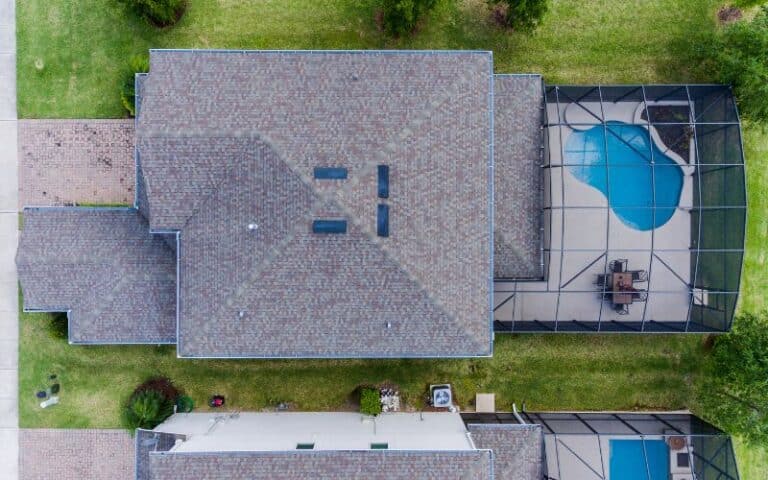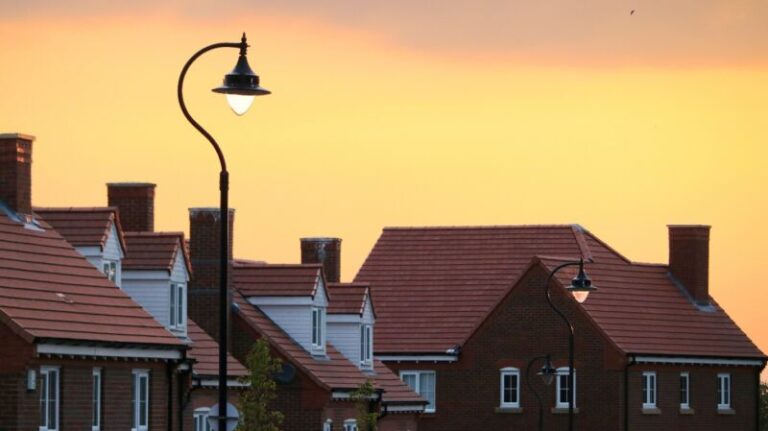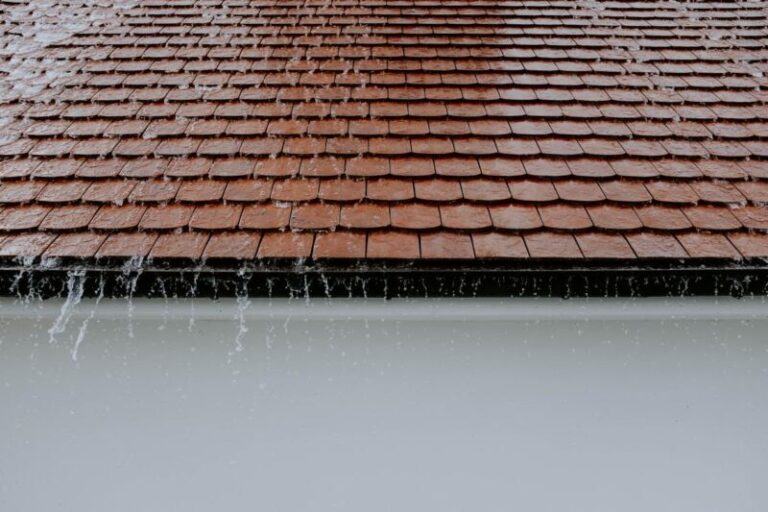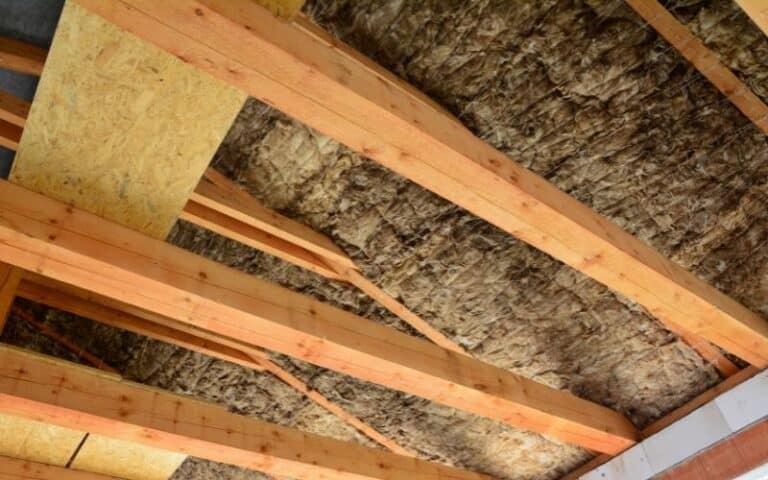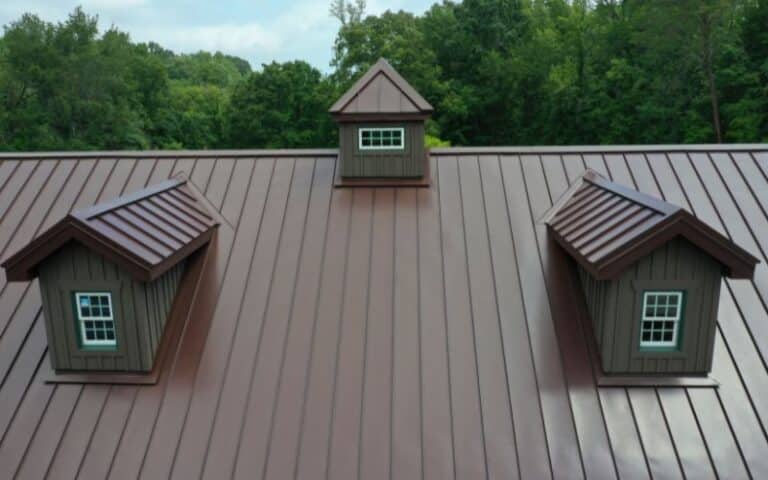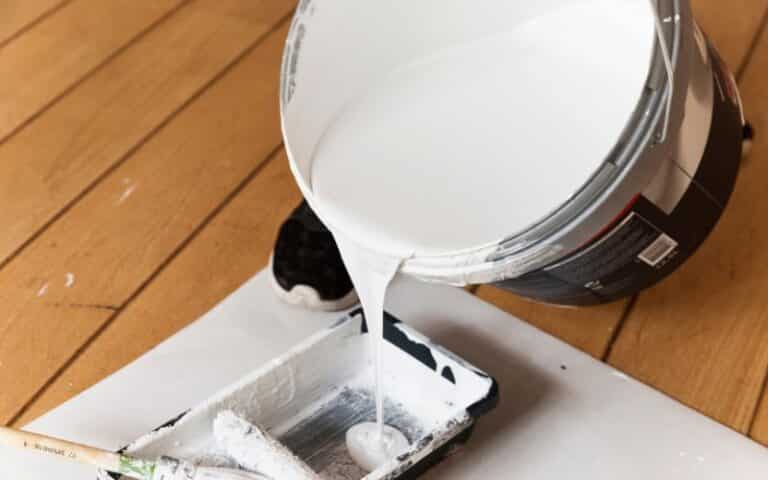Power lines transmit the current of high voltage from place to place. During current flow, two elements come to play– electric and magnetic fields.
The magnetic field poses more danger because it can easily penetrate the human body. It’s this penetration that sends electricity into the body.
Moreover, the intensity of the magnetic fields depends on three factors; the current, voltage, and the distance between each wire. So, let’s see what happens when a power line touches your roof.
Immediately a power line comes in contacts your roof, stay calm to avoid making terrible mistakes. If you have little kids and pets, bring them closer to you safely, and don’t allow anyone to get close to any metal or moisture. Now, carefully exit the building on rubber shoes if the roof is burning, and call the nearest emergency authority.
Ready for a Roofing Quiz?
What to Do When Power Line Touches Roof?
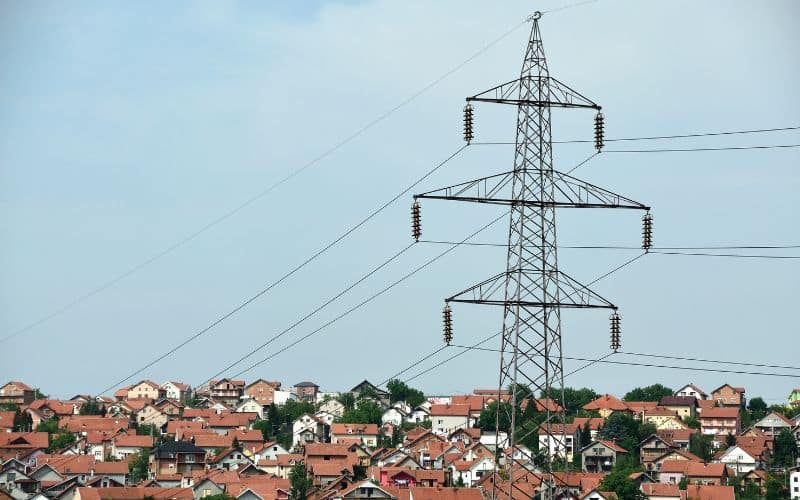
If a live power line falls or touches your roof, remain calm. Without first getting hold of yourself, you might unintentionally create further damage; hence prioritize calmness.
After controlling yourself, avoid touching any metallic object except your phone to call the emergency agency around you.
Also, ensure to be on rubber shoes since rubber is an insulator, and place both feet on the ground. If you have pets and kids, carefully protect them.
You can decide to leave your house as carefully as possible, especially when you notice your roof is on the verge of burning.
But remember, don’t leave your home without wearing shoes. If you see your roof is on fire, never attempt to put out the fire with water.
You shouldn’t go close to a water supply; the pipes could be hot. You’ll only aggravate the problem because water and electricity do not mix.
However, if you know that your roof is of non-inflammable materials, keep yourself and every living thing in your house safe.
Get your phone or walkie-talkie and put a call across to the nearest emergency agency. They’re in the best position to save your life and property from danger.
How Close Can a Roof Be to Power Lines?
It depends on the amount of voltage the overhead power line carries. The recommended distance for high voltage lines differs from that of low voltage lines.
Please see the table below.
| Voltage Current | Voltage Amount | Distance |
|---|---|---|
| High voltage | 66,000,000V | 200 meters |
| Low voltage | 415V | 50 meters |
Any roof within or above those distances is safe from power lines’ dangers.
A roof close to the power lines puts the house and the Occupants at risk of danger. The wind might be heavy on stormy days and bring down the lines.
Consequently, the roof (especially metallic roofs) will conduct the electricity and burn down the house or electrocute the Occupants.
Also, there’s a buzzing sound that power lines produce, especially the high voltage lines. This noise signifies the movement of electricity in the air surrounding the lines.
If your roof is close to the lines, trust me, there’s no way that noise won’t disturb you.
The buzzing sound can also deprive you of quality sleep, especially at night, when it will be very audible.
So if you’re someone who cherishes sleep or likes serenity, ensure your roof is far from the overhead power lines.
Additionally, for flat roofs or open balconies, a vertical clearance of 2.4 meters is recommended from the roof to the lowest point of the power line and a horizontal clearance of 1.2 meters from the nearest point of the power line to the roof.
Meanwhile, for a pitched roof, the safe distance is 2.4 meters or 3 feet. A horizontal clearance of 1.2 meters should be between the power line and the roof.
Power Line Touching Metal Roof
If the power line breaks and falls on the metal roof, it will electrocute and burn the house. Thus, this can lead to the death of all the inhabitants within the building.
Residents use metal roofs for their houses because of their high resistance to wind, longevity, and lightweight.
But, in cases where the house with a metal roof is under a power line, the metal roof could do you more harm than good. It’s even more dangerous during rainfall.
When water constantly drops from the lines to the roof while a current passes through, it could cause electrocution, which is the danger of living under power lines, because metals like water conduct electricity.
The electric current flowing between the high voltage lines and the metal roofs could move to other metals indoors like door knobs.
And when you come in contact with them, shock, electrocution, or even death.
What Happens if Roof Touches Power Lines?
When the roof touches overhead power lines, it could lead to electrocution or the inflammation of the whole building. Besides, it could result in loss of life and property.
It would even be more tragic if you used metallic roofs. Metals conduct electricity outstandingly, so when the roof contacts power lines, every metallic substance gets the current too.
There’s no way you won’t have metallic substances around you, but if you touch them, unfortunately, experiencing electric shock is certain.
Unfortunately, when Nobody else is around to detect the ongoing electrocution, the person will die.
To be safer, inform the electricity company immediately before the worst happens when you notice the wires sagging lower than usual.
Meanwhile, if your roof is non-metallic, the situation wouldn’t be so disastrous. But, electricity can find its way to move through other conductors around.
Besides, electrocution is still possible, so put a call across to the emergency service.
Power-Line Near Garage Roof?
If you have a falling power line to your garage roof, you shouldn’t touch it. You should stay very far away from it and keep others away because you can’t know if the wires are live or not by staring at them.
Hence, contact your power or utility company immediately.
In this situation, stay away from your car or any tool in the garage since their bodies are metallic. Hence, wait till the utility company arrives to inspect.
They will inform you if the low-hanging overhead power lines near your garage’s roof are safe or need professional intervention.
However, here are more details on the reasons power line can fall or sag closer to the roof;
#1. Improper Maintenance Or Installation
When the power lines are improperly maintained or installed, the insulators or the pole top hardware could be faulty.
Consequently, cause the overhead cable to sag or fall completely to your garage’s roof.
When they are not properly maintained or repaired, electricity can leak and damage the electrical hardware and the whole power line.
#2. Loads
Mechanical loads, such as the force from gravity, wind, snow, ice, etc., can put much pressure on the wires and insulators and cause the overhead cable to sag.
Also, the freeze/thaw cycles that come with weather changes can damage the overhead power line lines or the whole electrical infrastructure. As a result, this causes them to sag dangerously low or fall on your roof.
However, if you think the low-hanging overhead power cable signifies serious and immediate danger. Call the electricity company or contact an emergency service provider as soon as possible.
What to Do Now?
Various conditions could result in power lines sagging down over roofs. Some of these conditions include; harsh weather conditions causing branches and trees to fall on the overhead power lines.
Also, public accidents could lead to power line falls. So, here’s what to do.
The safest thing to do in such a situation is to remain indoors and contact your electricity company for power line safety options.
The transmission company is best positioned to disconnect the power to your home and give more necessary information regarding the situation.
After contacting them, you can safely exit your home without fear of electrocution. However, while indoors, avoid coming in contact with metals and water.
But, before exiting your home, wear dry personal protective equipment, and don’t take metallic objects with you.
Furthermore, don’t touch or go near the fallen power line. Avoid touching tree branches that are close to the power lines.
And keep everyone at a distance of at least 10 meters from the sagging power lines.
Final Thoughts
As useful as Power lines are, it becomes tragic when they fall or contact the roof. If the cables are live, it could result in loss of life and property if there’s no prompt action.
But, in such a deadly situation, you can safeguard yourself by avoiding every metal and moisture in the home and calling an emergency service provider.

